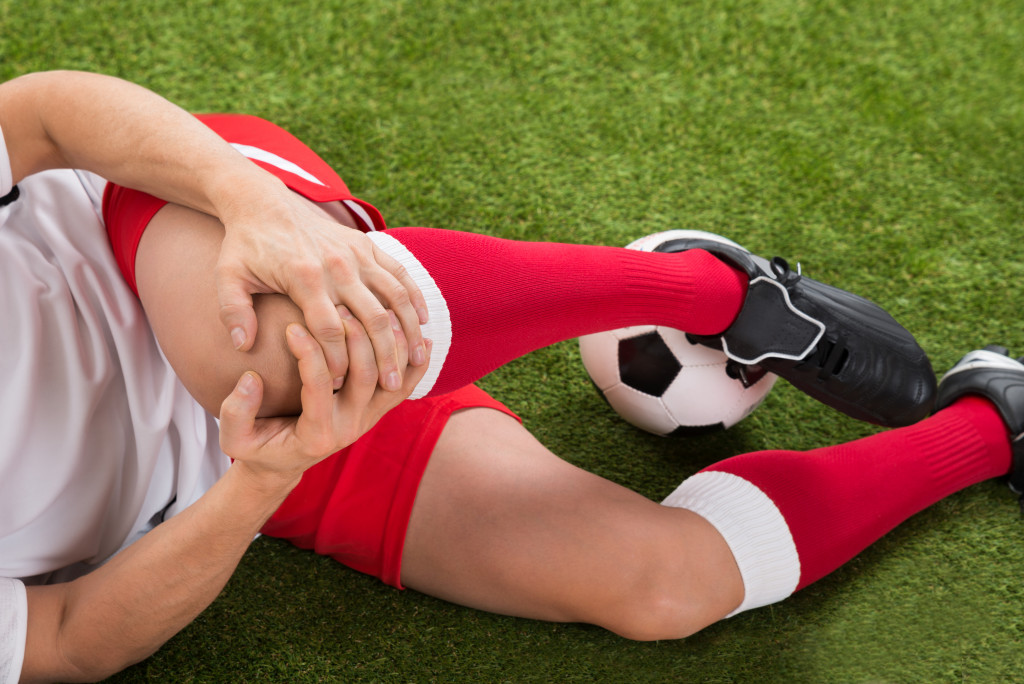- Consult with a reliable knee doctor for diagnosis and treatment plan.
- Rest, protect your knee, apply ice and elevate to reduce pain and swelling.
- Follow a rehabilitation program tailored to your injury for improved strength and mobility.
- Adopt a healthy lifestyle, including diet, exercise, and maintaining a healthy weight.
- Be patient and listen to your body to achieve a successful recovery.
Dealing with a knee injury can be a challenging and frustrating experience. Whether you’ve suffered a sudden sports-related injury or have developed a chronic condition, taking proper care of your knee is crucial for a speedy recovery and long-term well-being. This guide will provide five essential tips to help you manage and cope with a knee injury effectively.
1. Visit A Reliable Knee Doctor
When you sustain a knee injury, seeking professional medical advice as soon as possible is crucial. Consulting with a reliable knee doctor is essential for an accurate diagnosis and appropriate treatment plan. An experienced orthopedic specialist will thoroughly examine your knee, order any necessary tests, such as X-rays or MRI scans, and provide an accurate diagnosis. They can guide you through recovery, suggest appropriate treatments, and recommend rehabilitation exercises tailored to your injury. Remember, visiting a reliable knee doctor is the first step toward a successful recovery.
2. Rest and Protect Your Knee

After receiving medical advice, it’s essential to rest and protect your injured knee. Resting allows the damaged tissues to heal and prevents further injury aggravation. Avoid any activities that strain your knee, such as running, jumping, or participating in high-impact sports. Utilize crutches or a knee brace if your doctor recommends additional support and stability. Protecting your knee during the initial stages of recovery is crucial to prevent the worsening of the injury and promote healing.
3. Apply Ice and Elevate
Applying ice and elevating your leg is highly beneficial to reduce pain, swelling, and inflammation associated with a knee injury. Ice helps to constrict blood vessels, reducing blood flow to the injured area and minimizing swelling. Apply a bag of frozen peas or an ice pack to the injured knee for 15-20 minutes every 2-3 hours. Whenever possible, elevating your leg above heart level helps reduce swelling by promoting better circulation and fluid drainage from the affected area.
4. Follow a Rehabilitation Program
Following a comprehensive rehabilitation program is crucial as your knee starts to heal. Physical therapy is vital in regaining strength, stability, and range of motion in your injured knee. Your physical therapist will design a customized exercise plan that gradually increases in intensity and complexity. This program may include stretching, strengthening, balance exercises, and low-impact activities like swimming or cycling. Sticking to your rehabilitation program diligently will help you regain function and minimize re-injury risk.
Here are the benefits of following a rehabilitation program:
Improved Strength
Following a rehabilitation program helps you rebuild the strength of your injured knee and surrounding muscles, improving overall stability and preventing future injury. Additionally, strengthening exercises can help increase the range of motion in the knee joint.
Reduced Pain
Many physical therapy exercises are designed to address any pain or discomfort associated with the injury. As you perform these exercises regularly, you should start feeling less pain as your knee heals and strengthens.
Enhanced Mobility
Regular physical therapy sessions will improve your mobility so you can return to running or walking without difficulty or discomfort. Regular stretching and strengthening exercises prescribed by your therapist can also improve balance and coordination throughout your body.
Return to Normal Activity
A rehabilitation program can help you safely and confidently return to your pre-injury activities safely and confidently. By gradually increasing the intensity of your exercises, you will be able to easily perform everyday tasks and ensure that the injured knee is functioning at its best.
5. Adopt a Healthy Lifestyle

Maintaining a healthy lifestyle is crucial for overall well-being, but it becomes even more important when recovering from a knee injury. A nutritious diet can help promote healing and strengthen your bones and muscles. Make sure to eat foods high in minerals, vitamins, and protein. Examples include fruits, vegetables, lean meats, and whole grains. Maintaining a healthy weight can also alleviate pressure on your knee joints and reduce the risk of further damage. Engage in low-impact exercises that don’t strain your knee, such as swimming or stationary biking, to stay active and maintain cardiovascular health.
To Wrap It Up
Dealing with a knee injury requires patience, proper care, and a commitment to recovery. By seeking professional medical advice, resting and protecting your knee, applying ice and elevating, following a rehabilitation program, and adopting a healthy lifestyle, you can improve your chances of a successful recovery. Everyone’s recovery timeline differs, so be patient and listen to your body’s needs. With proper management and a positive mindset, you can overcome your knee injury and return to an active, pain-free life.

